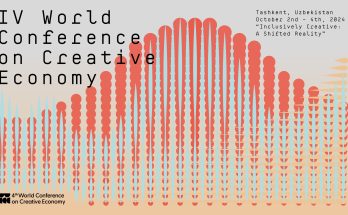By Tvara Misra
Sometimes you need to state the obvious. Yes, women menstruate. There is blood, and mess and it is not as rosy as they portray in the blue fluid stained sanitary napkin advertisements. Also, we refrain from wearing tight white pant suits for office that day, since the pads are often not that effective, says Tvara Misra.

There is a flurry of activity on the sanitary front. No, I do not mean Swacch Bharat. It is the two unique campaigns which have been making the rounds, fuelled by support on social media. One is the ‘Pads Against Sexism’ campaign, in which patriarchy is being shamed through the… pause, ahem, pad. Or as is ladylike to say (shorter pause) – sanitary napkin. It is very innovative, using the instrument of regimentation (since menstruation is such a taboo and women have to observe so many constraints in ‘those’ days) to fight back. Started on Women’s Day by a German woman to draw attention to the issues of sexual violence, the campaign has caught on.
In India, college spaces in Delhi saw sanitary napkins being put up with messages like ‘kanya kumari, gandi soch tumhari’ and ‘the red here is paint, but rape draws real blood’ (the pads had been brushed over by red paint). The campaign even has its own Facebook page — ‘Pads Against Sexism-Delhi,’ which says that it has been “created to tackle sexism in a country where it is still rampant”. What is particularly interesting is that the display picture for the page is that of a man, one Prem bhai, seemingly a roadside vendor- a lower middle class man (let me not get into whether class is discernable in the way you look and whether I have a specific ‘gaze’) – holding up a sanitary pad on which messages promoting gender equality are stuck. He is smiling up at the camera, completely at ease holding up an ST on the roadside. Coming from a culture where sanitary pads have always been relegated to the invisible — especially around men- this surely is commendable (not that one should get carried away thinking that others, similarly placed, would feel about the issue in the same manner).
Protests and Backlash
But protests are never generally complete without a backlash. It came this time, not from lathi-wielding goons (you could get the feminazis by just going near it or perhaps not dramatic enough to smash up a tree on which the pad is stuck) but from college authorities. In Jamia Millia Islamia, a Delhi-based university, a show cause notice was issued to the students responsible, and they have to now defend their actions to the satisfaction of the authorities, failing which disciplinary action could be taken against them. Also, there has been an online backlash on a post where several students are discussing the campaign. The dissenting comments range from being, well, stupid (“ Just like breast milk, feminazis should try to market menstrual blood, introducing it as a cosmetic product, which keeps away skin disease, because it is “so pure””) to nasty, personal attacks, calling the campaign initiators “weed consumers” and “fashionable activists”. However, the key theme resonating through the dissenting posts was the outrage as the “shamelessness” in the displaying STs in public spaces. Is the ST not to be seen/ used in only restricted private spaces by half the population (or less for India, thanks to killing female fetuses) once a month and never to be talked about?
Stigma & Taboos
This is the point which brings me to the second campaign. A certain Rupi Kaur, posted a picture of sleeping, with a menstrual stain on her pajamas and bed sheet, to attack the stigma associated with periods. When she posted it on Instagram, the site took it down, stating it was against community guidelines. She reposted it saying that “I will not apologize for not feeding the ego and pride of misogynist society that will have my body in an underwear but not be okay with a small leak”. I think that is a very pertinent message. Why are we okay with seeing sexualized semi- nude body images, but not some blood? One argument could be most imagery in today’s mass consumption is targeted to attract the heterosexual male consumer, and periods are, well, not sexy.
At this point, I would like to add that it is not that all men are averse to periods, or discussing them. Out of curiosity, empathy or desire to connect/ understand, some men are willing to engage with the topic. Recall Arunachalam Muruganantham, inventor of the low cost sanitary napkins? As he points out in his very engaging Ted Talk, it is mostly the discomfort of women, which causes men to step back from the issue. This discomfort is, of course, the product of feeding into our psyche acceptable “ladylike behavior” and the “shaming” nature of the topic since childhood. By co-opting the women into patriarchal norms (recall Gramscian hegemony), by making them believe that periods are impure and shameful, patriarchy has created a discourse where women themselves shame their bodies and its functions and perpetuate these beliefs, from mother to daughter in the name of culture.
Menstrual taboos are amongst the numerous ways in which Menstrual taboos has controlled women’s bodies. Bound feet and female genital mutilations may be seen as an extension of the same line of thought. Though some restrictions do make practical sense, for a time when sanitary pads/ tampons were not available and things would get messier, when seen in the larger rubric of practices which attempt to control female body and sexuality, the practicality aspect seems just a shoddy excuse. And mainstream religion was not too women-friendly anyway, so quoting religion here is kind of irrelevant. Then there is really no logic to keep mum about the chum, right?
I have been brought up in a system when chumming on school days would be such a pain (girls would often be absent on day1/2), with having to keep ‘checking’ for the dreaded stain. Where I am to carry my Whisper packets from the shop wrapped in a paper bag, put them in an obscure drawer at home and not throw the wrappers in the common bins, lest people get to know it’s that time of the month. When ST advertisements on TV during family time were/ are for awkwardly staring at the TV (discomfort compounded if you have the remote). Since no one talked about tampons or STs, I remember wondering how do women’s swimming teams manage to swim year round, and none of my teen girl friends has any clue about it either (in a pre google- it era).
I, therefore, think it is high time that shame and secrecy shrouding a normal bodily function is done away with. STs and the stained pajamas are not only innovative mediums of spreading a message, they are also a metaphor for all that is constantly being hidden in open sight. At least these two campaigns have gotten us talking about one of the things we know happen, but are uncomfortable/ ashamed to talk about publically. While I may not want my bodily refuse up for display on a daily basis, the fact that once in a while, such shock therapy modules are needed to get people to talk about things which have been brushed under the carpet for too long. Also, I feel that while there is nothing shameful about menstrual blood, there is nothing too glorious about it. It just is. Period (overused pun intended). I am not for romanticizing it much (creator, womb, birth giver) but rather making it ‘invisible’ in the ubiquity of its discourse, rather than concealment.
Author Profile
- India Writes Network (www.indiawrites.org) is an emerging think tank and a media-publishing company focused on international affairs & the India Story. Centre for Global India Insights is the research arm of India Writes Network. To subscribe to India and the World, write to editor@indiawrites.org. A venture of TGII Media Private Limited, a leading media, publishing and consultancy company, IWN has carved a niche for balanced and exhaustive reporting and analysis of international affairs. Eminent personalities, politicians, diplomats, authors, strategy gurus and news-makers have contributed to India Writes Network, as also “India and the World,” a magazine focused on global affairs.
Latest entries
 India and the WorldNovember 26, 2025G20@20: Africa’s Moment – The Once and Future World Order
India and the WorldNovember 26, 2025G20@20: Africa’s Moment – The Once and Future World Order DiplomacyOctober 4, 2025UNGA Resolution 2758 Must Not Be Distorted, One-China Principle Brooks No Challenge
DiplomacyOctober 4, 2025UNGA Resolution 2758 Must Not Be Distorted, One-China Principle Brooks No Challenge India and the WorldJuly 26, 2025MPs, diplomats laud Operation Sindoor, call for national unity to combat Pakistan-sponsored terror
India and the WorldJuly 26, 2025MPs, diplomats laud Operation Sindoor, call for national unity to combat Pakistan-sponsored terror India and the WorldJuly 25, 2025When Fire Ends, Diplomacy Begins
India and the WorldJuly 25, 2025When Fire Ends, Diplomacy Begins








